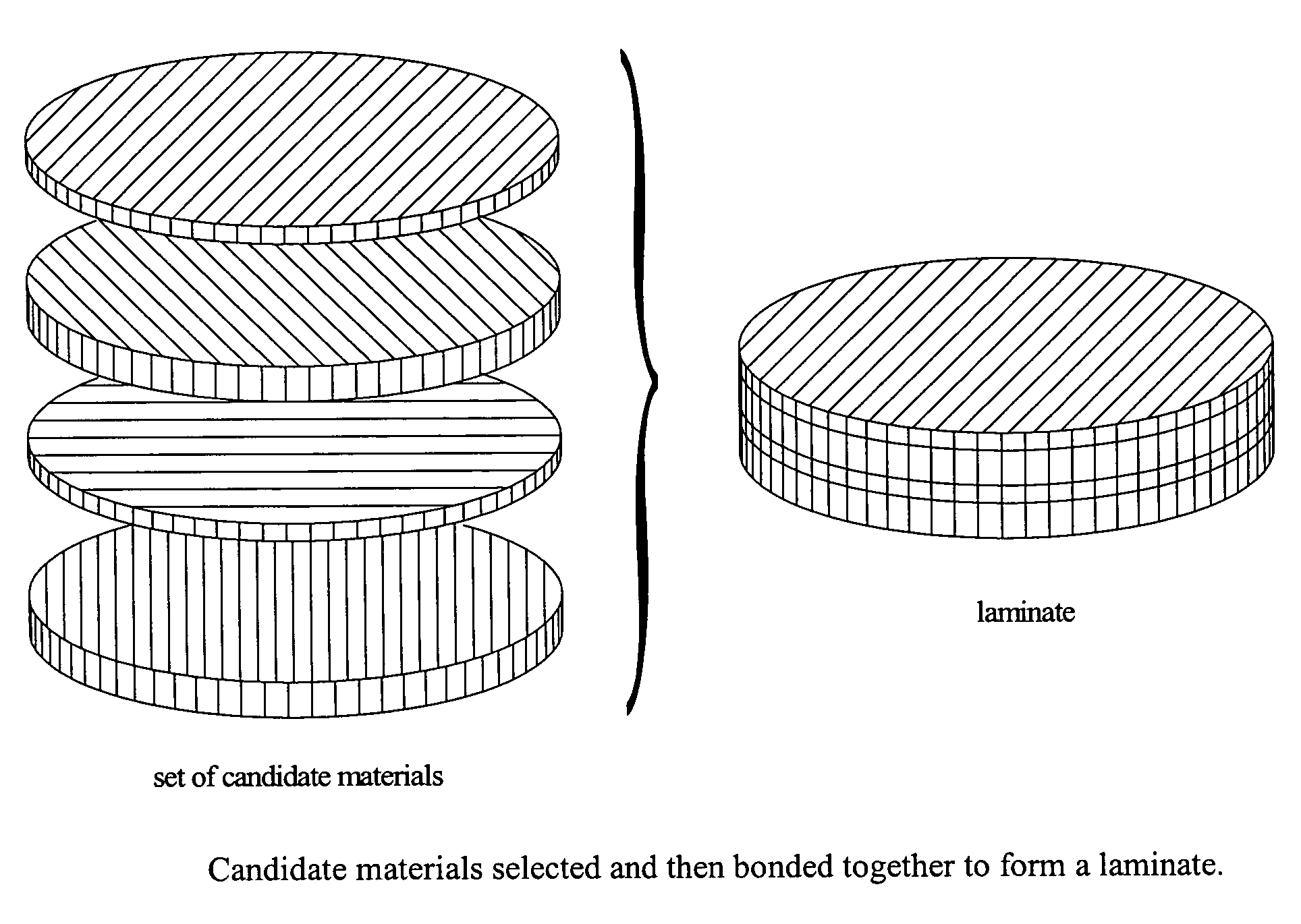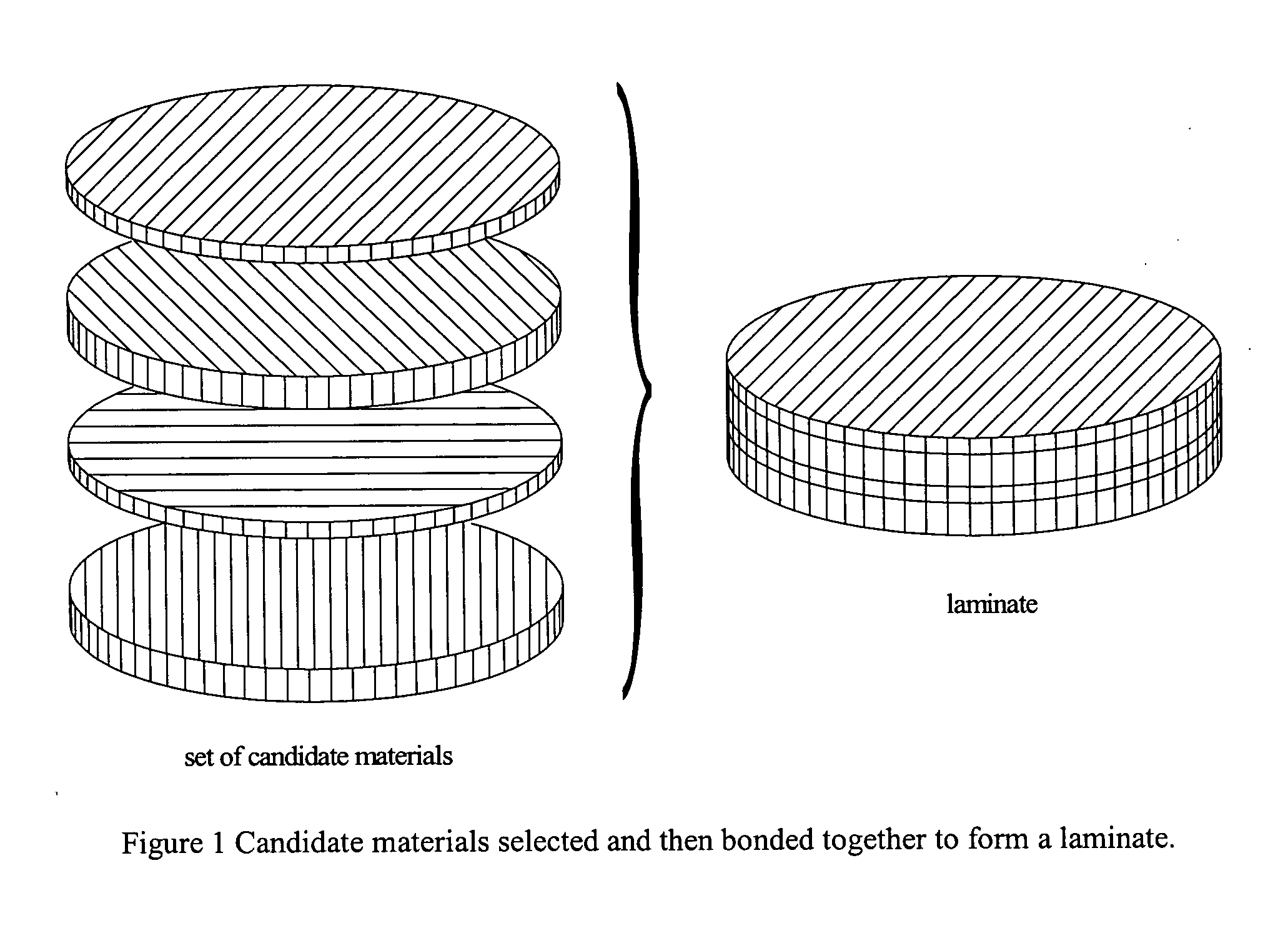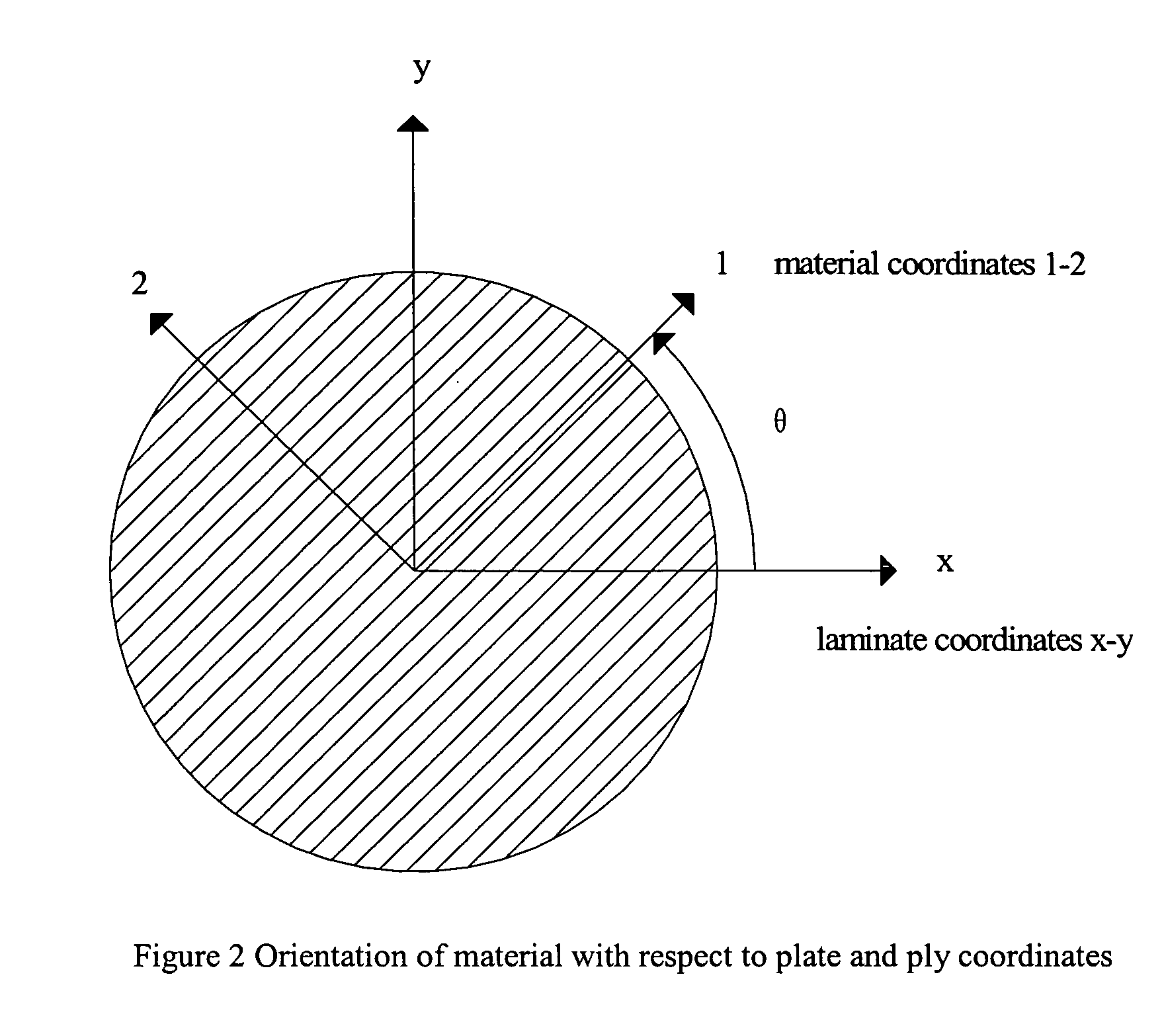Method for the design of laminated composite materials
- Summary
- Abstract
- Description
- Claims
- Application Information
AI Technical Summary
Benefits of technology
Problems solved by technology
Method used
Image
Examples
numerical example
[0149] The objective is to design a laminate with the following specified stiffnesses: {D1111spec=8.27D1112spec=0D1122spec=0.19D1212spec=0.38D1222spec=0D2222spec=0.67}GPa(8.5.11)
[0150] Consider that three candidate materials with the following properties exist: T300{Q11111=181.8Q11121=0Q11221=2.90Q12121=7.17Q12221=0Q22221=10.35}QPaE-glass{Q11112=39.2Q11122=0Q11222=2.18Q12122=4.14Q12222=0Q22222=8.39}GPaKevlar-49{Q11113=76.6Q11123=0Q11223=1.89Q12123=2.30Q12223=0Q22223=5.55}GPa(8.5.12)
[0151] Setting the two first invariants of the specification equal to the first invariants of the laminate yields 0.411+(z1z3)3-0.233(z2z3)3=00.402+(z1z3)3-0.2050(z2z3)3=0(8.5.13)
[0152] Equations (8.5.13) can be solved explicitly for the required normalized coordinates for a feasible solution. z1z3=-0.693 z2z3=0.693(8.5.14)
[0153] These coordinates imply that the respective volume fractions of the three layers are
v1=0.153 v2=0.693 v3=0.153 (8.5.15)
[0154] The normalized coordinate...
PUM
| Property | Measurement | Unit |
|---|---|---|
| Weight | aaaaa | aaaaa |
| Fraction | aaaaa | aaaaa |
| Thickness | aaaaa | aaaaa |
Abstract
Description
Claims
Application Information
 Login to View More
Login to View More - R&D
- Intellectual Property
- Life Sciences
- Materials
- Tech Scout
- Unparalleled Data Quality
- Higher Quality Content
- 60% Fewer Hallucinations
Browse by: Latest US Patents, China's latest patents, Technical Efficacy Thesaurus, Application Domain, Technology Topic, Popular Technical Reports.
© 2025 PatSnap. All rights reserved.Legal|Privacy policy|Modern Slavery Act Transparency Statement|Sitemap|About US| Contact US: help@patsnap.com



